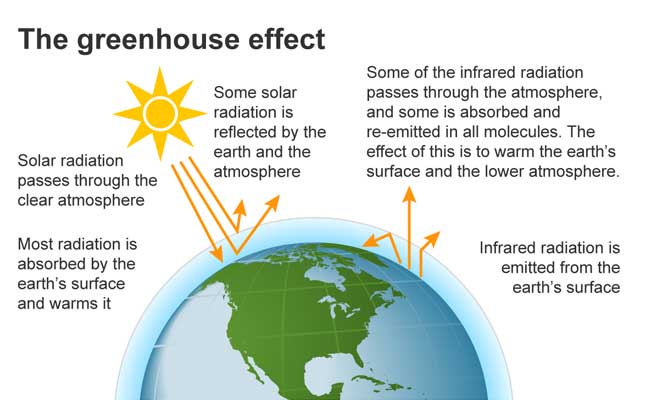Introduction
The greenhouse effect is a natural process that occurs on Earth, and it’s responsible for keeping the planet’s temperature within a habitable range for life. However, due to human activities, such as burning fossil fuels, deforestation, and agriculture, this natural process has been accelerated, resulting in the phenomenon known as climate change. In this article, we’ll explore the greenhouse effect, its role in the Earth’s climate system, and the consequences of its disruption.
What is the greenhouse effect?
The greenhouse effect is a process by which certain gases in the Earth’s atmosphere trap heat from the sun, preventing it from escaping into space and thereby warming the planet. The primary greenhouse gases are carbon dioxide (CO2), methane (CH4), nitrous oxide (N2O), and fluorinated gases, which include hydrofluorocarbons (HFCs), perfluorocarbons (PFCs), and sulfur hexafluoride (SF6).
The greenhouse effect works like this: The sun radiates energy onto the Earth’s surface in the form of visible light and ultraviolet radiation. Some of this energy is absorbed by the Earth and some is reflected back into space. The Earth also emits energy in the form of infrared radiation, which is absorbed by greenhouse gases in the atmosphere. These gases then re-emit some of this energy back towards the Earth, which warms the planet.
The Role of the Greenhouse Effect in the Earth’s Climate System
The greenhouse effect is a critical component of the Earth’s climate system. Without it, the Earth’s surface temperature would be about -18°C (0°F), which is too cold to support most forms of life. Instead, the average surface temperature of the Earth is around 14°C (57°F), which is warm enough for life to thrive.
The greenhouse effect also helps to regulate the Earth’s temperature by preventing large fluctuations in temperature between day and night and between different seasons. During the day, the Earth’s surface absorbs heat from the sun, and at night, it radiates this heat back into space. Without the greenhouse effect, this heat would be lost into space, causing temperatures to fluctuate dramatically between day and night.
The Consequences of Disrupting the Greenhouse Effect
Human activities, such as burning fossil fuels, deforestation, and agriculture, have resulted in an increase in the concentration of greenhouse gases in the Earth’s atmosphere. As a result, the greenhouse effect has been enhanced, causing the Earth’s temperature to rise. This phenomenon is known as global warming.
Global warming has many consequences, including:
- Rising sea levels: As the Earth’s temperature rises, the polar ice caps melt, causing sea levels to rise. This can lead to flooding in coastal areas and the displacement of millions of people.
- Increased frequency and intensity of extreme weather events: Global warming can cause more frequent and severe heat waves, droughts, floods, and storms.
- Changes in ecosystems: Global warming can cause changes in ecosystems, including the loss of biodiversity and changes in the timing of seasonal events, such as the flowering of plants and the migration of animals.
- Human health impacts: Global warming can have serious impacts on human health, including heat stroke, respiratory problems, and the spread of diseases carried by insects and rodents.
What can we do to reduce the greenhouse effect?
Reducing greenhouse gas emissions is essential to reduce the impact of global warming. Here are some actions we can take to reduce the greenhouse effect:
- Reduce energy consumption: One of the most effective ways to reduce greenhouse gas emissions is to reduce our energy consumption. This can be achieved by using energy-efficient appliances, turning off lights and electronics when not in use, and using public transportation or carpooling instead of driving alone.
![]()






One thought on “The Greenhouse Effect”